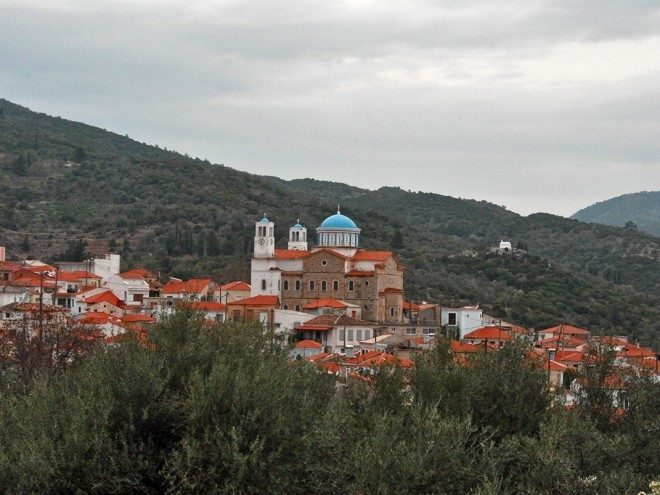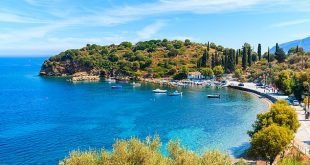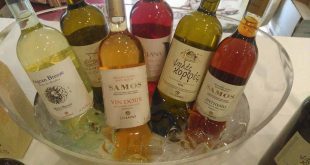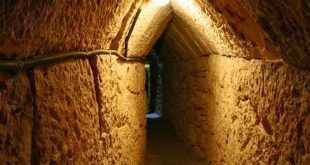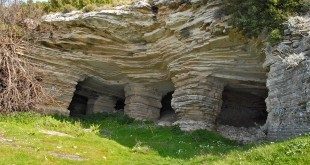Pagondas is located in the south-eastern part of Samos, some 12 km away from Pythagorio. It is a village built on the eastern slopes of Mount Bournia, at an altitude of 180 meters.
Pagondas has a privileged view over the plains of Chora, the open sea of the Aegean, and the unique horizon of the Ionian Land (Asia Minor, now part of Turkey), where the spirit of the ancient Greek philosophers flourished, offering to the whole world their creative thoughts.
For the origin of the name “Pagondas” two stories are widely known. The first one states that the name is a derivative of the word “pegon-da”, which means “the land of the springs”. The second, and probably the most valid one, is that the name was chosen by the first residents of the village (settled during the second colonization period of Samos). They came (migrated) from the village Pagontas of Euboea Island (located in Central Greece, north-east of Athens).
The most known sights of the village are: The paved central square, which is of unique beauty, the magnificent Church of the Holy Trinity, along with its Ecclesiastical Museum, the Church of the Christ and its marble belfry, which features unique architecture characteristics and dates back in the 16th century (it is declared “Monument” by the Hellenic Ministry of Culture, and soon is to be declared as such by UNESCO), the old primary school (now serves as a Folklore and History Museum), the many elegant churches, the old cooperative mechanical olive-oil producing mill, the abandoned mills, and the municipal manually-operated washing machines of the 19th century.
The magnificent and beautiful beaches of Tsopelas and Kyriakous are regarded as places of unique natural beauty, along with the imposing Kakorema, which is a natural “result” of the geophysical changes happening in the Aegean Sea. The Church of the Prophet Elijah can be easily distinguished in the mountain top, where the view of the sunrise and the sunset, turns the visitor… into a potential poet!
Most of the residents of the village are mainly occupied with the cultivation of olive-trees and viticulture. They also produce a variety of exceptional quality biological products such as chamades, honey, cheese, extra virgin olive oil, vegetables, fresh and dried fruits, and stuffed figs.
The most important events that took place in the history of the village are: The development of a pioneering (historically speaking) cooperative movement, the brave armed resistance movement during World War II (Greece was under Nazi, Italian, and Bulgarian occupation, 1941-1944), and the high rate of students received in Greek universities and have excelled both in Greece and worldwide as scholars, artists, and scientists.
Today, the main traditions-customs are the Carnival (called Kadis), the Father’s Day, organized annually, during the first week of July, by “Omonoia” (a local ladies association), and the many summer festivals, such as the Festival of the Holy Trinity, of the Virgin Mary, of Saint Paraskevi, and of Saint Panteleimon.

The Municipal District of Pagondas include the historical village of Heraion, which is built in the bank of the river Imvrasos, where, according to Greek Mythology, goddess Hera used to bathed her beauty, causing “allegorical” agitation, intensity, and love to the great Zeus.
In Heraion, both due to its mythological and geographical significance, it was built, by two famous architects of antiquity (Rhoikos and Theodore), in the name of goddess Hera, the largest, according to Herodotus, temple of antiquity where the ancient summer ceremonies, called “Heraia” used to take place. The ruins of the temple testify for the elegance of the Sanctuary and the unique standing marble column, after which the surrounding area was named.
See photos of Pagondas village (Click to enlarge).
 iSamos.gr Η ενημερωτική σελίδα της Σάμου! Εξερευνήστε τη Σάμο, τις παραλίες της, τη φύση της, τις ομορφιές της. Διαβάστε την ιστορία της Σάμου
iSamos.gr Η ενημερωτική σελίδα της Σάμου! Εξερευνήστε τη Σάμο, τις παραλίες της, τη φύση της, τις ομορφιές της. Διαβάστε την ιστορία της Σάμου

